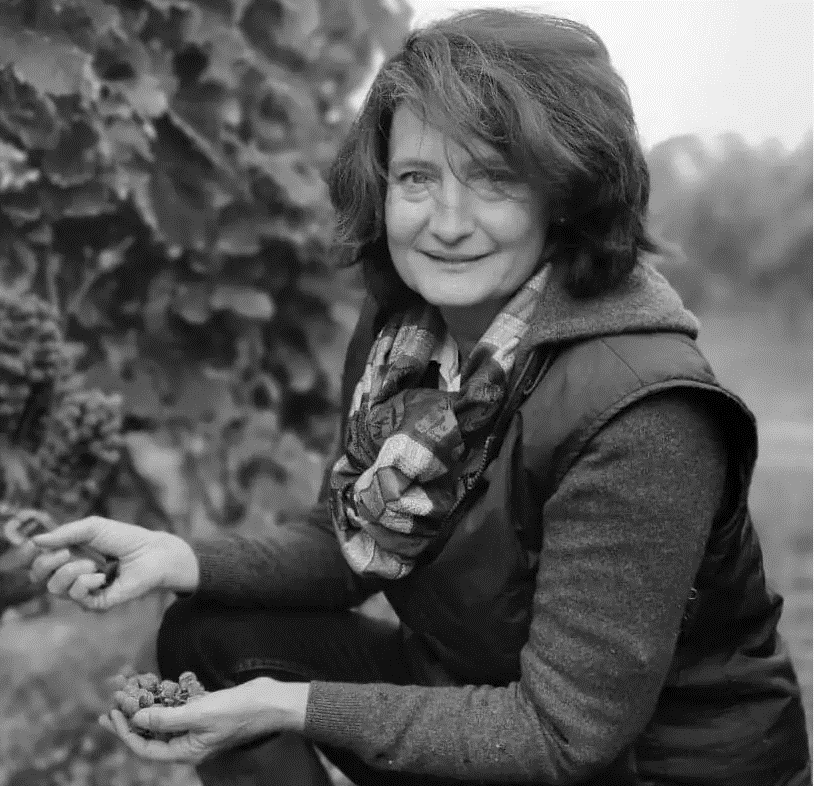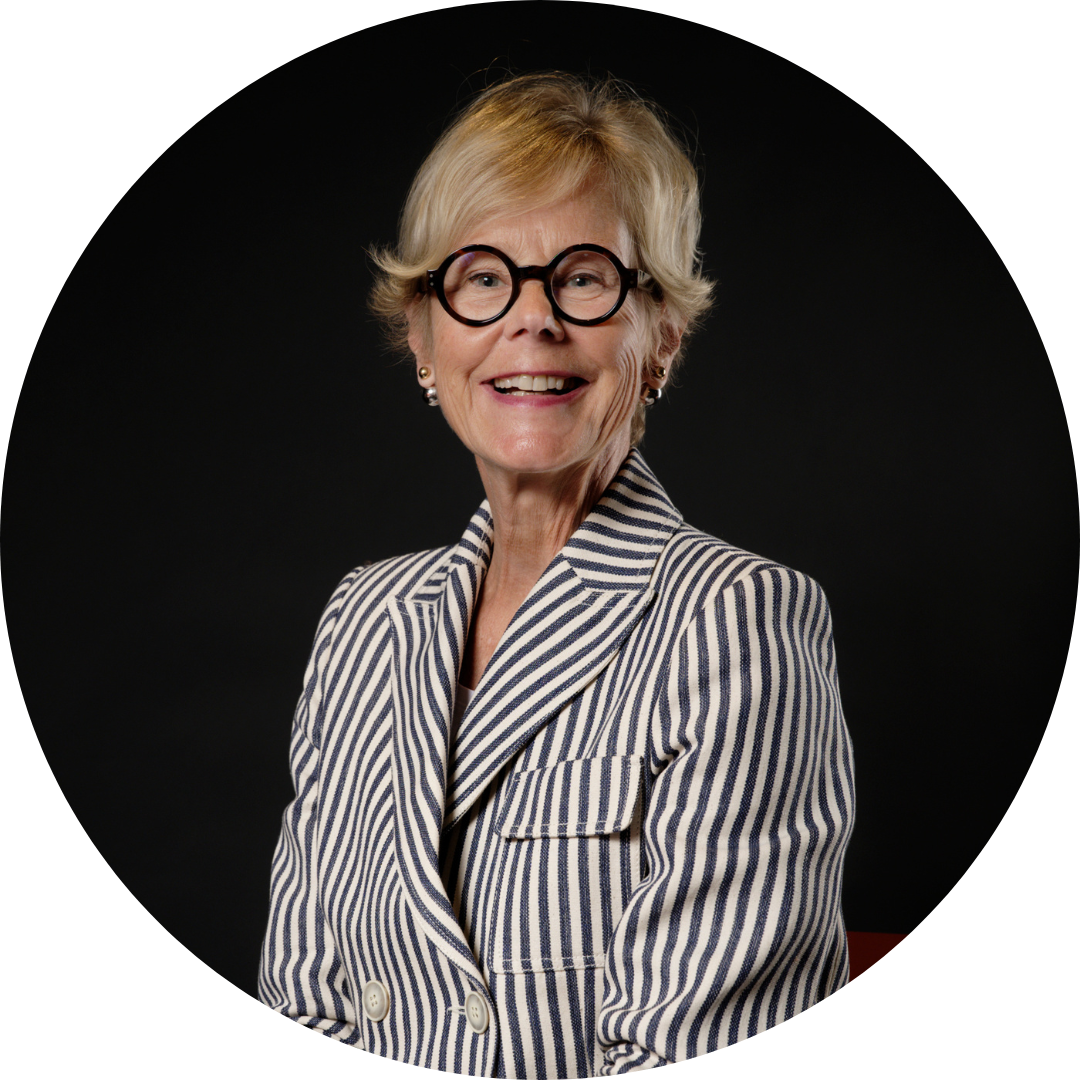Laure de Lambert Compeyrot
Owner
Château Sigalas Rabaud
1er Cru Classé Sauternes
With a solid scientific education from Montpellier Supagro and the Faculty of Oenology in Bordeaux, Laure de Lambert Compeyrot is now Managing Director of Sigalas Rabaud, where she represents the sixth generation to run the estate since 1863.
Presentation
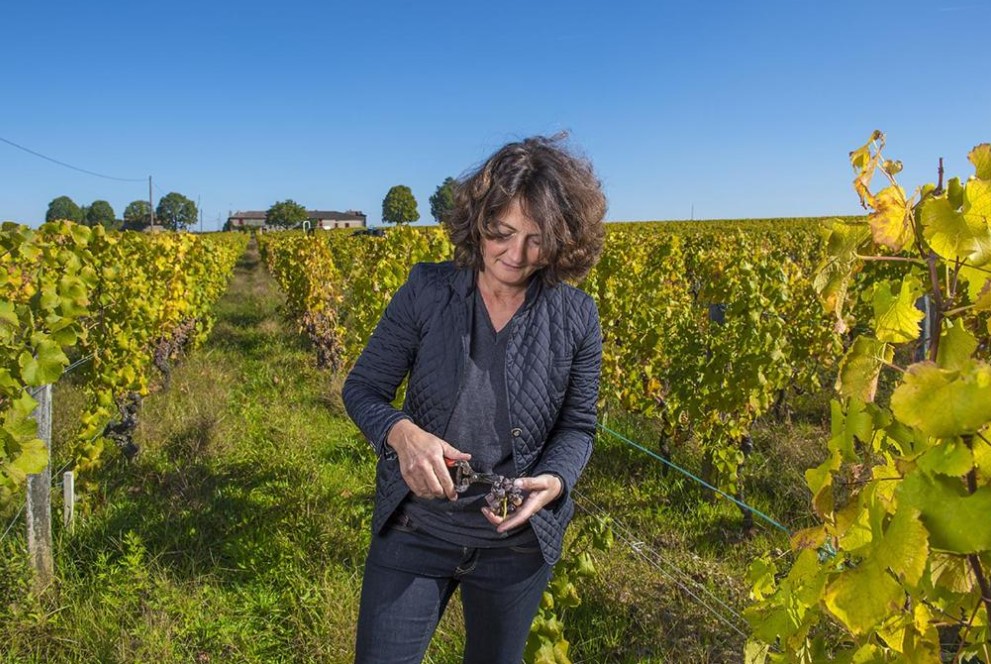
Gerda : What are the main challenges you personally face in your work?
Laure de Lambert Compeyrot : The first thing is to respect the work of my ancestors in terms of wine quality. It’s a quest for excellence. These great wines have a particular and unique personality. The second thing is to ensure that the business model is sustainable and that it continues to run smoothly. Finally, I would like this model to be completely adapted to our times. I’m very concerned about everything to do with the environment. That’s why I’m delighted to work with Florent, our Operations Manager. He’s very environmentally aware. Working with a young person is very important to me, because he has the ideas and proposals of his generation. Environmental issues are a concern for me, but for him, they mainly concern his future. Together, we can go further. Many estates are finding it hard to recruit staff, but together with our neighbours we have set up a GEA (Groupement d’Employeurs Agricoles) which include12 châteaux. I really like the idea of the GEA because it offers a very interesting social aspect; we try to get people on board and motivate them by making them love the profession. Together, we identify those who really want to work and who have the skills, and then we help them to progress. We train them, and they may either be hired by one of us and secure a permanent contract.
The Harvest 2024
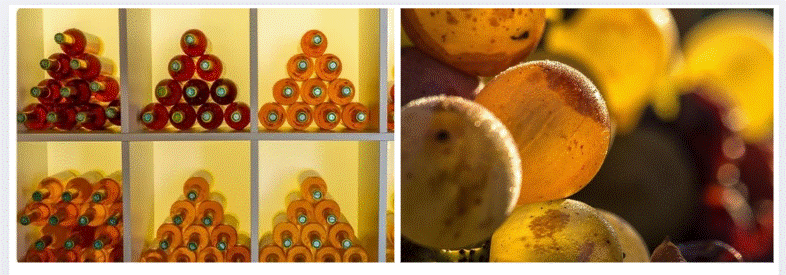
G : Can you give me a souvenir of the 2024 harvest?
LDLC : Oh, yes, I’ve got loads! The most memorable was one morning when a young girl arrived with a bouquet of roses. She gave one to each picker and said: ‘It’s so nice here, so I’m giving you a rose’. The whole team was speechless. I had an old picker next to me who whispered: ‘Oh, that’s so nice! Having a good team means you’ve already done a lot of the work. Harvesting in Sauternes is very complicated, and having a team that gets on well together is essential. As for the sorting, we’ve done three, the third of which was the most difficult. The key to great Sauternes is, of course, having magnificent botrytised grapes, but it’s also a question of meticulous selection during the sorting.
Sigalas Rabaud Today & Tomorrow
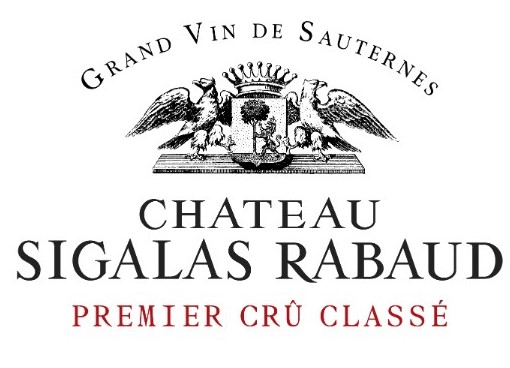
G: You mentioned that Florent Vesselle (new operations manager) came to the estate because young people also embody ‘green’ principles. Could you elaborate on how advanced your estate is in its ecological transition?
LDLC: We’ve considerably reduced all our inputs. We’re working hard on plant cover, but we need to go even further. We’re HVE4 certified, but I’m not interested in labelling because I don’t think it’s always appropriate. The paths suggested can sometimes lead to dead ends, and obtaining this label for a small estate like Sigalas Rabaud requires a lot of time and paperwork. I prefer that we move forward with all our responsibility, awareness and energy. We have made significant progress in this area. We’ve brought in outside experts to help us observe and analyse, and we’ve included a research programme on combating cluster glass, for example. We practice RDD in a discreet way, which is useful for us.
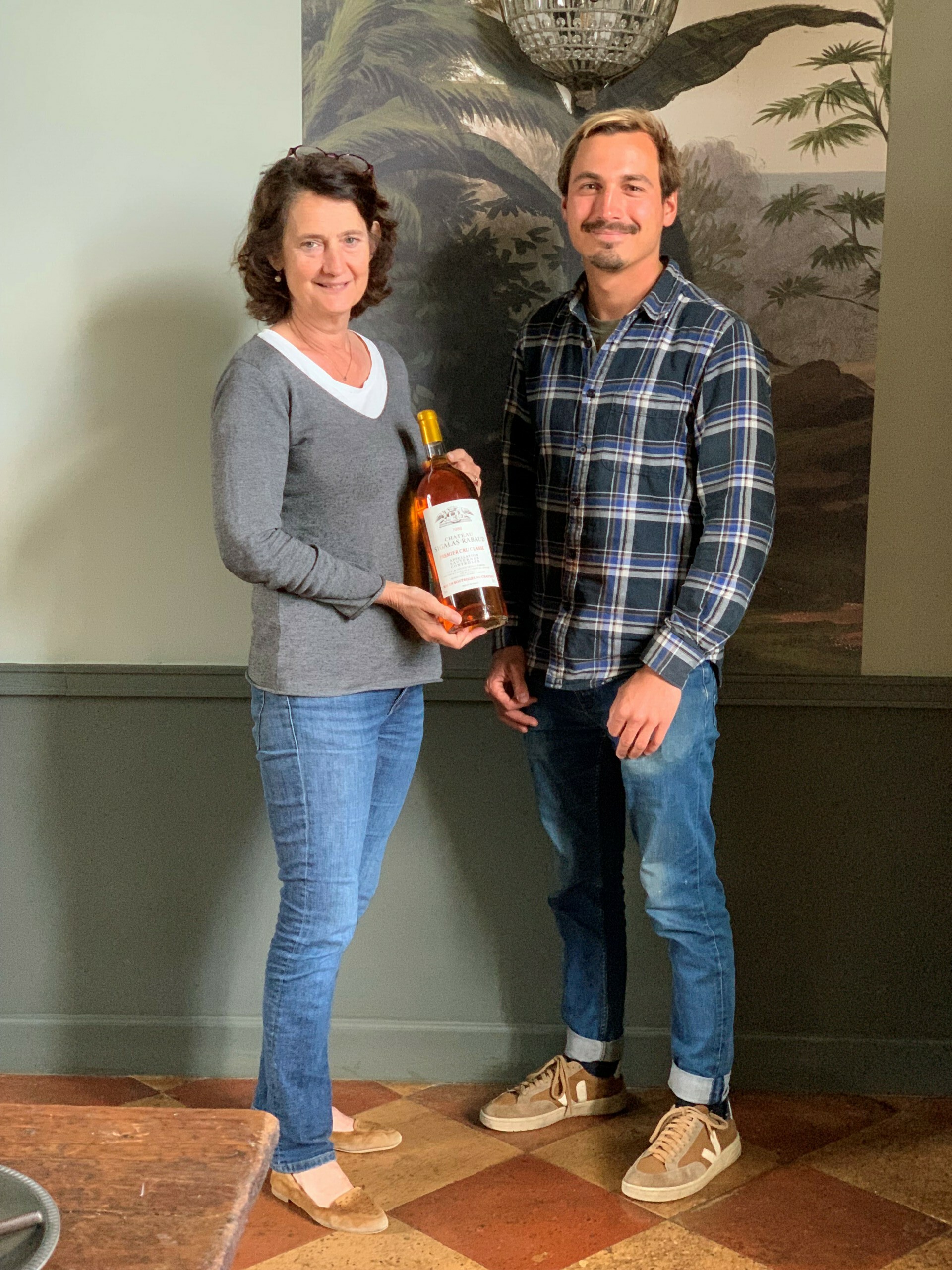
Florent: Yes, it’s mainly a question of observation; we try to understand and adapt to the vintage. We don’t make choices automatically. We’re reintroducing biodiversity into the vineyard, which means working the soil carefully to keep it alive. This allows us to limit inputs, including fertilisation. We also use prophylactic measures in the vineyard to reduce the inputs needed to treat diseases. I think the idea of planting fruit trees among the vines is a good one, but we need to take a step back from these practices. A lot of care needs to be taken, particularly to avoid competition with the vines, problems with mechanical tools and potential diseases. Planting hedges around the plots is already a good step. We have carried out a study on the subject and are making progress in this area, but there are still issues to be resolved within the plots. What’s more, in Sauternes we’re surrounded by woodland, which creates a very different landscape to that of the Médoc. We have an appellation of just 1,750 hectares, compared with 2,200 hectares previously. Our appellation is small and its surface area has shrunk considerably in recent years.
LDLC: I keep a close eye on what’s happening in the vineyards. Observation allows us to make considerable progress, and it also gives us the opportunity to adjust our practices by learning from others. However, I think I’m too independent to adhere to a single system. To be honest, this is also linked to our business model. At Sigalas, we’ve had a yield of around 10 hl/ha in recent years. This model is unreliable if we can’t increase our production.
The Business
G: What positioning(s) would you like to see for your brand(s)?
LDLC: For me, Sigalas Rabaud must be a wine of excellence and maintain its rank as a Premier Cru Classé. I always make sure that my blends place us among the top 5 Sauternes wines, even if that means making a few sacrifices. This quality is essential, because without it, the wine won’t keep up. We have to achieve excellence while respecting the typical character of the old Sigalas Rabaud.
G: What makes your wines different and unique?
LDLC: We have an exceptional terroir. Sigalas is located on this famous “veine grasse”, gravel on clay, which makes our wines unique, with great elegance and incredible finesse. We have never pursued excessive concentration. We have always maintained the balance for which Sigalas is renowned. Since I arrived, I haven’t changed the Sigalas style, but we have made progress in the purity and precision of the wines. Here, we like to drink our wines. When I taste the old vintages, I find that freshness without ever being opulent. The changes we’ve made have been gradual: with a small team able to react quickly when botrytis arrives, and by working with smaller vats in the cellar. I haven’t changed the vinification.
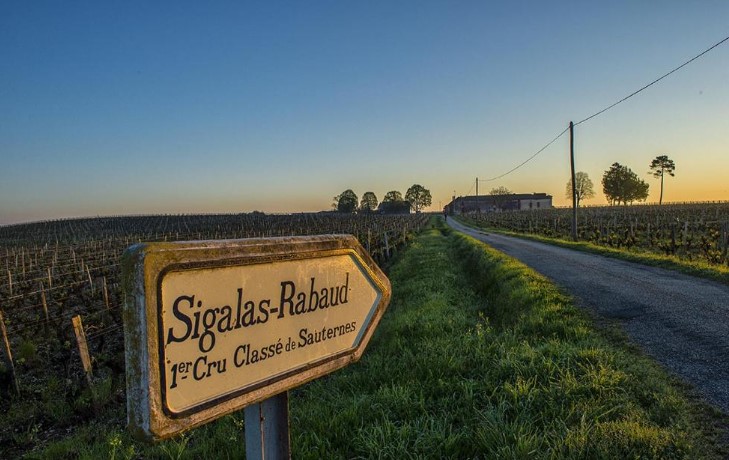
G: What future projects are you currently working on (technical, marketing or sales) ?
LDLC: We have diversified our activities with wine tourism to establish a sustainable business model. Our brand is promoted in collaboration with La Place de Bordeaux, and we really enjoy working with our negociant partners. Their recognition is due to the consistency of our prices, which is much appreciated. We’ve done a lot of work positioning and developing our wines in the restaurant sector. We have also invested heavily in wine tourism on the estate. With these three areas, we’ve managed to create a synergy between our activities, which works quite well. However, I’ve always believed that our terroir, as well as being exceptional for sweet wines, has immense potential for dry wines. We’ve been working on dry white wines for over 15 years, and this terroir also offers great potential in this category. In fact, that’s Florent’s goal: to produce the best dry whites in Bordeaux. I fully support the idea of creating a ‘Sauternes Blanc Sec’ appellation. I’m convinced that this idea, which was once personal, is now shared by many others. For me, producing dry whites is essential, because having a varied range is crucial. With our relatively low yields for Sauternes, it’s important to have volume to ensure good brand positioning. The possibility of producing dry white wines represents an exceptional opportunity. To be honest, it wasn’t my initial objective; I started out of curiosity in 2009, simply to see what our terroir had to offer. I’m also very interested in Semillon, which I consider to be an exceptional variety for dry white wines. The idea had been in the back of my mind for a few years, and I finally decided to try a dry version of our terroir. At the time, I had a trainee who asked me why I bothered waiting for botrytis to arrive. So we made a blend of Sauvignon and Semillon. I wasn’t expecting the Semillon to be of such exceptional quality. It was really unique, with substance, density and a real personality. Recently, a sommelier told me on the phone that we were perhaps better known for our dry whites than for our sweet wines. One of the reasons for this is certainly the greater volume of dry whites. That doesn’t bother me, although it did surprise me at first, because I’m primarily a sweet wine grower. But at the same time, I say to myself ‘what luck! All of us in the appellation are faced with the question of how many bottles of sweet white wine we consume per year compared with dry white wines… There’s more growth in dry white wine.
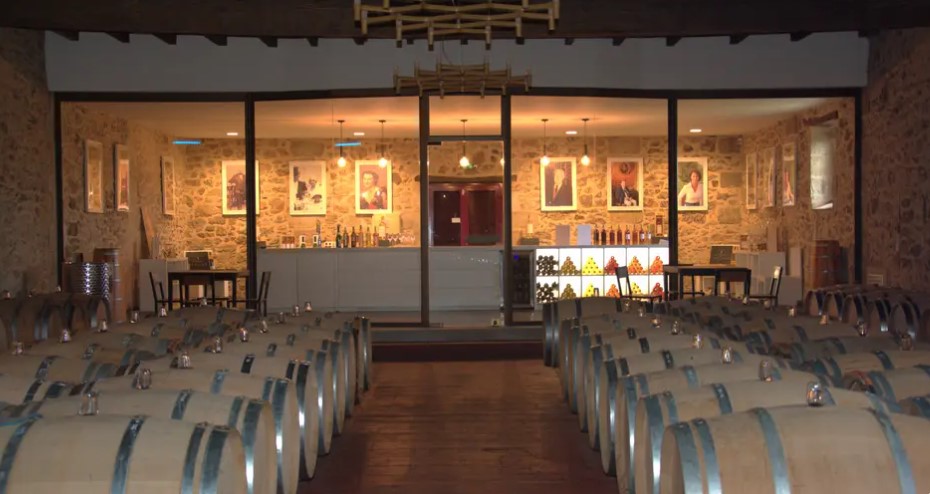
G: What are your priorities in terms of business development ?
LDLC: We’ve focused on the restaurant trade. Through this channel, I know that the wine is consumed. I absolutely want consumers to enjoy a bottle of Sigalas Rabaud. I don’t want this wine to be seen only as a heritage wine. Of course, it’s important to be able to keep it, but it should also offer pleasure when it’s young. I continue to work with the Bordeaux negociant and I’m delighted to do so, while allowing them a certain freedom of distribution. At the estate, we sell directly to visitors. It’s quite possible that they’ll come back in six years’ time to buy again. Our biggest market is France, which I’m delighted about. It’s important to be recognised at home first, and that makes our work easier. We don’t need to look for distant markets. We’re members of the 1855 crus classés and the Union des Grands Crus, because it’s precious to be recognised by your peers. These are friendly and effective groups. I enjoy working with its members. These associations provide services such as presentations to journalists, Primeur tastings and events for wine lovers. These are opportunities that are hard to come by for a small estate like Sigalas. We are also independent winegrowers. It’s important to strike a balance between being in your classification category and maintaining direct contact with end customers. It’s thanks to this contact that we’ve been able to enrich our range. We also produce a sulphur-free wine. I’ve been asked by friends and young people to create lighter wines, even botrytised wines. This entry-level range is also attractive. Burgundy inspires me to develop more parcel-based cuvées. Although the Sigalas terroir is very homogenous, there are significant differences between the upper and lower parts, the east and west. Even on 14 hectares, these variations are present.
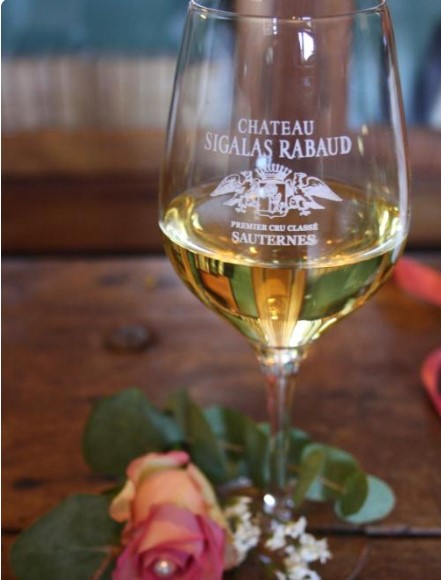
G: What measures have you taken to deal with the drop in demand for Sauternes?
LDLC: First of all, we took up our pilgrim’s staff and went out to meet restaurant owners. We did everything we could to get our bottles on their tables. At the estate, we systematically organise tastings, explain the characteristics of our wines and suggest food and wine pairings. It’s simple, and it often encourages visitors to buy afterwards.I don’t think I’m affected by the difficult market as much as others. The diversification of our range, the development of wine tourism, and the trust placed in us by the wine trade all contribute to the sustainability of our business.
G: How do you see the future of the Sauternes appellation in the light of this crisis? Do you foresee any significant changes in the Sauternes wine industry?
LDLC: We’re facing more of a production crisis than a commercial crisis, even if it is affecting certain brands. I’m convinced that dynamic producers who are capable of creating great wines will be able to diversify their activities and place their bottles everywhere. I think there will be a concentration of brands. Some producers who don’t produce large quantities or have no takers could see their business come to an end. I’m pleased to see that some major leaders and investors have taken an interest in the appellation. These are entrepreneurs who want the business model to work. Unlike the previous investors, who were often bankers or other people who didn’t really care about the business model, these new players are looking for a return on their investment and are banking heavily on wine tourism. The Sauternes appellation is very special. The location is magnificent, the light is superb and the authenticity has been preserved. The appellation is close to Bordeaux, but remains completely disconnected from the city, in a very rural area. Visitors, whether they arrive by helicopter, train or car, find this place a change of scenery. We offer a diverse range of wine tourism, from the top end with Yquem, which is opening its doors more and more, to Lafaurie-Peyraguey and its Michelin-starred restaurant, not forgetting our estate and other properties. This benefits everyone, while respecting our family identity. We welcome our visitors with a touch of ‘old France’, while remaining firmly rooted in the modern world. Our main challenges are economies of scale, because we’re too small, and climate change. Temperature volatility is a major concern, especially for Semillon, a grape variety that is very sensitive to these variations. The plant is increasingly affected these days. The fact that Sigalas Rabaud only covers 14 hectares means that production costs are high. I have a number of ideas for the future, including developing our branded wines, such as La Demoiselle de Sigalas. After 15 years at the estate, I now have a clearer vision of the direction we want to take, and the creation of branded wines, which require a certain volume of production, is without doubt one of the avenues we are considering for our development. We also have a very dynamic union. I’m on the board and I’m pleased to see that everyone is really pulling together. Working together in our appellation is a pleasure. There’s a real synergy between the châteaux, and we’re making good progress together. For the dry whites, we organise joint tastings and have created a crate with our four neighbours for a joint blend. We enjoy talking to each other.
Favorite bottle of Laure de Lambert Compeyrot

G: If you had just one favorite bottle ?
Yes, of course I have a favourite bottle. Recently, I was very moved when I tasted a Sigalas Rabaud 2015, which completely caught me by surprise. At some point, something happens… and it embodies everything I’m trying to achieve. We all have certain criteria and a certain aesthetic that we want to achieve. That day, I was touched by a rare emotion, as we often approach wine from an analytical perspective. With this wine, I didn’t ask myself any questions about what was right or wrong. Suddenly, I was overwhelmed by emotion
Gerda BEZIADE has an incredible passion for wine, and possesses a perfect knowledge of Bordeaux acquired within prestigious wine merchants for 25 years. Gerda joins Roland Coiffe & Associés in order to bring you, through “Inside La PLACE” more information about the estate we sell.

